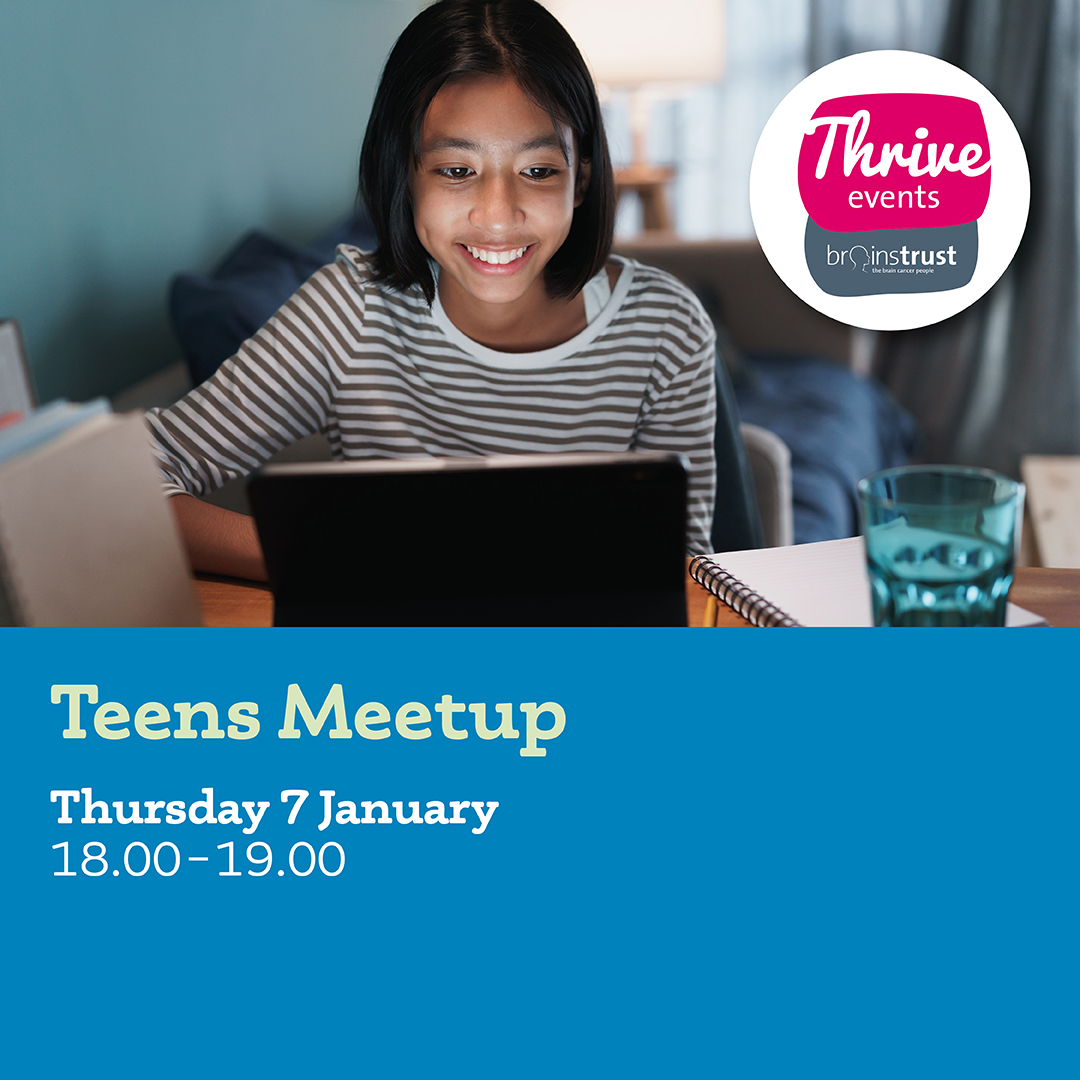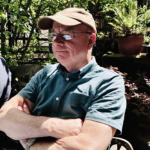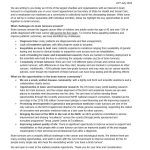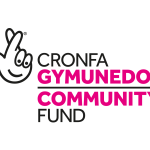Join the caring community and learn from others
We know that being a caregiver for someone with a brain tumour can be lonely and isolating. Speaking with others who understand and are in a similar situation can be a vital part of feeling better connected and part of a community.
Thrive events
We run regular ‘Thrive’ workshops, on a variety of different themes and subjects that we know are useful to the brain tumour community.
Our workshops are all facilitated by our Support Specialists, who are expert coaches.
Recent workshops have included:
- Managing fatigue
- Behaviour and Personality Change
- Cannabinoids
- Mindful drawing
- Diet and Nutrition
- Coaching and Communication
- Hypnotherapy
We know that when someone you love is diagnosed with a brain tumour, things can quickly spiral and change like the tide. Any sense of control that you may have once had over daily life can disappear and become replaced by feeling anxious, uncertain and overwhelmed.
Our brain tumour workshops give you practical strategies and tools to tackle challenges that arise as a caregiver. With the help of expert guest speakers for some topics, we are also able to help you make informed decisions about brain tumour treatment and care for your loved one.
We’re hosting a fortnightly virtual meetup, just for carers, so you can connect to people that understand, ask your questions and be heard in a safe, friendly and welcoming space. Come and chat – no agendas. Just pop in to say hello! Fortnightly on Thursdays, 1pm-2pm. Book your spot here.
View our upcoming events calendar
Please note: All of our workshops are currently in an online format because of the Covid-19 pandemic.
 Peer support
Peer support
We know there is great value in connecting with others one to one. This is why we have our Peer Support service.
You may have a specific question about caring for someone with a brain tumour, or you may just want to speak to someone who understands.
The aim of the service is to directly connect caregivers who have a shared or similar experience in order to help you feel better connected and supported.
How often and how you communicate with each other is up to you, but a Support Specialist will oversee the relationship and keep in touch to make sure it is working for both of you.
Private Facebook group
We have a welcoming and supportive online community in our closed and carefully moderated Facebook group. With over 2500 members, it is a safe space for you to share experiences and support others. To join the group search ‘Brain Tumour Support brainstrust’ and answer the joining questions.
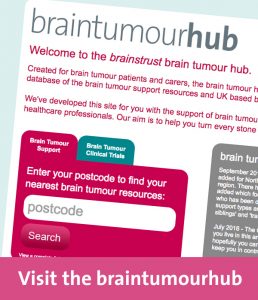 brain tumour hub
brain tumour hub
The brain tumour hub is an easy to navigate database of brain tumour support resources and clinical trials across the country. Many of these resources are helpful to you as a caregiver.
Simply pop in your postcode and the hub will show you details of services in your area.
Handle With care- a memoir by Rochelle Bugg
The book in the authors words:
Divided into key themes (such as Diagnosis, Family, Hope, Dying and Healing), I’ve thought back to what I wish I’d known, what I wish I’d done (and what I wish I hadn’t done!) so that it might help others who have a loved one with a life-limiting illness. I wrote it for the people who have to grow up before they’re ready. For the people that want a reassuring hug from their loved one, only to realise it’s them who now has to give that hug. For the people who find themselves in a role they never asked for, but who are nevertheless determined to do a good job.
Whether it’s a quote that clicks, a practical tip that comes in handy, or a story that strikes a chord, my hope is that by reading this book, what you are/have been/are about to go through is a little less painful, or at least a little less lonely.
Discover our resources, designed to help you feel less alone and more in control.



